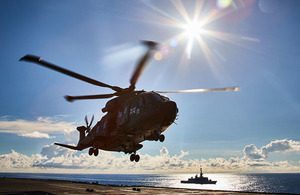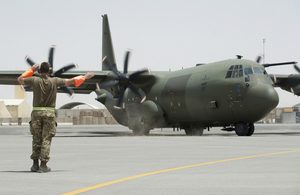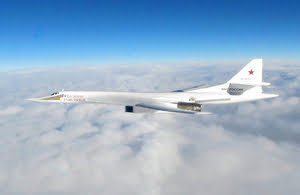2017-07-18 By Richard Weitz
The Western media has recently highlighted the Russian military buildup in Asia, which generally receives less attention than Russian defense activities in Europe and the Middle East.
Russia’s Far Eastern armed forces have benefited from the country’s overall military modernization program.
During the past decade, the forces in eastern Russia have been modernizing their technologies, raising their combat readiness, and elevating their regional presence.
They have therefore improved their ability to deter and, if necessary, win wars against China and Japan; prepare for security contingencies on the Korean Peninsula; and assure Russia’s control over its land and maritime territories
The newly released Defense Intelligence Agency Russian Military Power report attributes Russia’s general defense modernization to a desire to expand Russia’s power projection capabilities, give credibility to Russian diplomacy, and make Russia’s presence too visible to ignore.
The forces deployed in Russia’s large Joint Strategic Command “OSK East” (more commonly referred to as the “Eastern MD”), headquartered in Khabarovsk, are more specifically tasked with ensuring the defense of the Russian Far East/Siberia/Arctic territories, maintaining strategic deterrence with China and the US, winning regional conventional wars, giving Russian leaders options to respond to Asian contingencies and crises, engaging with foreign militaries, making Moscow a player on Asian security issues, and serving as a force provider for other regions, including rotations in Syria, the Indian Ocean, and the Mediterranean Sea.
The units in the Eastern MD have increased their activities, with more frequent and larger military exercises to improve readiness, enhance intra-branch jointness, show strength and resolve to other countries, and encourage the sale of Russian weapons.
During the past decade, other Asian countries have bought some $30-billion worth of Russian missiles, tanks, warplanes, helicopters, armored vehicles, artillery pieces, and other defense items.
Although China and India have been the main buyers of Russian weapons, Moscow has been making a sustained effort to sell more arms to ASEAN members, including some traditional allies like the Philippines and Thailand.
The main ground forces in the Eastern MD include several combined-arms armies of varying sizes and capabilities as well as smaller ground units and formations, such as the 68th Army Corps (responsible for defending the Kuril Islands).
The units assigned to the Russian Aerospace Forces (established in 2015 from a merger of the Russian Air Force, Air Defense Troops and Space Forces) include two fighter regiments, a fighter/ground attack regiment, two ground attack regiments, one intelligence, surveillance and reconnaissance (ISR) regiment, and transportation and naval aviation squadrons.
These units operate Su-30SM, Su-30M-2 and Su-35S fighter planes; Mi-8, Mi-24, and Ka-52 helicopters; and S-300 and S-400 surface-to-air (SAM) missiles, and Tor-M2U anti-air systems.
The Russian Pacific Fleet is the second largest of the Russian Navy’s four fleets, headquartered in Vladivostok with an additional flotilla base in Petropavlovsk-Kamchatskiy. The Pacific Fleet has more than 70 combat vessels, including some 50 warships, about two-dozen submarines of various classes, plus several nuclear icebreakers.
lts Borei-class and Delta-III class SSBNs, based in the Krashennikov Bay on the Kamchatka Peninsula play an important role in sustaining Russia’s nuclear deterrent as they patrol under the Sea of Okhotsk protected by a bastion of other ships, including Oskar-class and Akula-class attack submarines, and land-based air and missiles.
Other nuclear forces in the Eastern MD are Russia’s long-range ballistic missiles and strategic aviation consisting of the Tu-160 Blackjack and Tu-95MS Bear H. Some of the Iskander-M missiles in the Eastern MD, which can deliver nuclear as well as conventional warheads, can hit targets in Central Asia as well as China.
As part of the Russian military buildup in Asia, the ground forces in the eastern MD are receiving the Armata family of armor, which includes a main battle tank (T-14), a heavy IFV (T-15), and other variations.
The Eastern MD has been receiving more advanced aircraft like the Su-34 and Su-35S. Furthermore, the district’s Mi-8AMTSh and Mi-24 helicopters are being modernized with the new Vitebsk EW complex designed for protection against anti-aircraft missiles and radars.
The Pacific Fleet is acquiring multi-purpose Steregushcy-class corvettes for littoral zone operations, upgrades to its Oscar-class SSGN that will extend their service lives at least another decade, and next-generation multi-mission ultra-quiet Yasen-class SSGN.
The Eastern MD is also obtaining new UAV systems and that can undertake long-range surveillance over vast normally inaccessible Arctic regions.
The new Boomerang amphibious personnel carrier would prove useful for fighting over disputed Pacific islands.
As for air-defense capabilities, the Eastern MD is deploying additional S-400s on the Kamchatka Peninsula. Meanwhile, the forces on the Kuril Islands are obtaining new coastal and air defense systems as well as modernization of their facilities and logistics.
Thanks to their modernization and already strong anti-access/area-denial (A2/AD) capabilities, Russian forces in the Eastern MD should prove capable of repelling any unlikely attack from either a state or non-state actor in the region.
Though it is hard to picture the outbreak of an actual war in Asia that would involve Russia, the augmented Russian forces could offset their conventional disadvantages through using, or threatening to apply, warfare above (nuclear) as well as below (hybrid) the conventional level.
The main uncertainty in projecting future Russian military power in East Asia is foreseeing how significantly Russia’s economic challenges will disrupt the planned modernization.
Thus far, the government has generally sustained the elevated defense spending of recent years despite cutbacks in other public spending sectors.
Yet, shortfalls in energy revenue, currency depreciations, Western sanctions, and other challenges could cause major delays and cutbacks in future defense programs aimed at Asia, especially if Moscow protects other military modernization priorities in the Arctic as well as European and Southern Russia.
APPENDIX: Russia’s Order of Battle in the Eastern Military District
Major Ground Forces

Major Aerospace Forces

The Russian Pacific Fleet

SOURCES: The data in this paper comes from various public sources; when they contradict, which they often do, the author made his best assessment of their accuracy.
“Russia and Eurasia,” The Military Balance 2016, Vol. 116, Issue 1 (London: The International Institute for Strategic Studies, 2016), pp. 163-210;
“Russian Army Order of Battle,” Global Security, http://www.globalsecurity.org/military/world/russia/army-orbat.htm#voeastern;
“Russian Defense Ministry to build up strength of airborne assault divisions,” TASS, July 30, 2015, http://tass.com/russia/811613;
“Войсковые Части России,” https://voinskayachast.net; “Восточный военный округ,”
Milkavkaz, archived screenshot dated April 18, 2017, http://archive.li/Z0h38#selection-441.1-441.25;
Oleg Mukhin, “20-я армия нашла командующего на Сахалине,” Kommersant, February 3, 2017, http://www.kommersant.ru/doc/3207955;
Denis Mokrushin, “36-я мотострелковая бригада“, livejournal, February 26, 2011, http://twower.livejournal.com/499098.html;
“35th Red Banner Combined Arms Army,” ww2.dk, http://www.ww2.dk/new/army/armies/35oa.htm;
U.S. Defense Intelligence Agency, “Russia Military Power: Building a Military to Support Great Power Aspirations,” DIA-11-1704-161, 2017, http://www.dia.mil/Portals/27/Documents/News/Military%20Power%20Publications/Russia%20Military%20Power%20Report%202017.pdf.;
and Dmitry Boltenkov, Aleksey Gayday, Anton Karnaukhov, Anton Lavrov, “Eastern Military District – OSC East,” warfare.be, http://archive.is/zTy8s;
and Vyacheslav Tseluiko, Russia’s New Army (Moscow: CAST, 2011), http://www.cast.ru/files/book/NewArmy_sm.pdf.
 Pictured with FS Courbet is a Merlin Mk3A helicopter of 845 Naval Air Squadron (NAS) working from the flight deck onboard FS Mistral in the Far East.
Pictured with FS Courbet is a Merlin Mk3A helicopter of 845 Naval Air Squadron (NAS) working from the flight deck onboard FS Mistral in the Far East.






 In preparation of the ISTAR Force Commander Visit to RAF Lossiemouth on the 13 July 2017, Wing Commander James Hanson (Officer Commanding First P-8A Poseidon Squadron) and his crew had a group and individual photograph in front of the US Navy P-8A Poseidon Aircraft which arrived at RAF Lossiemouth on the 11 July. Pictured Left to Right: Master Air Crew Mark Utting, Squadron Leader Mark Faulds, Wing Commander James Hanson, Squadron Leader Ian Tuff, Master Air Crew Paul O’Flaherty.
In preparation of the ISTAR Force Commander Visit to RAF Lossiemouth on the 13 July 2017, Wing Commander James Hanson (Officer Commanding First P-8A Poseidon Squadron) and his crew had a group and individual photograph in front of the US Navy P-8A Poseidon Aircraft which arrived at RAF Lossiemouth on the 11 July. Pictured Left to Right: Master Air Crew Mark Utting, Squadron Leader Mark Faulds, Wing Commander James Hanson, Squadron Leader Ian Tuff, Master Air Crew Paul O’Flaherty.